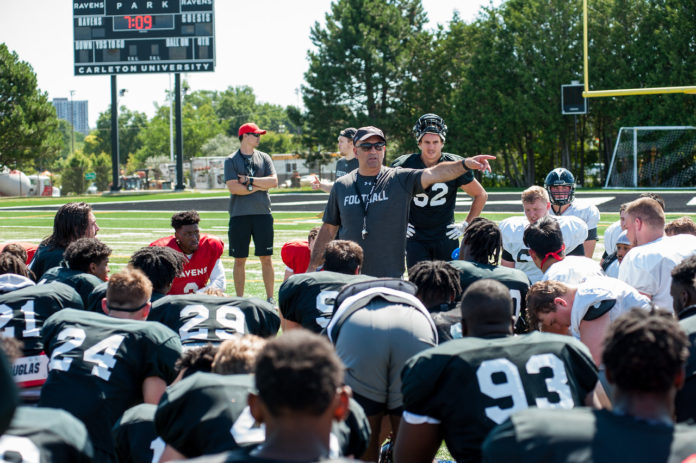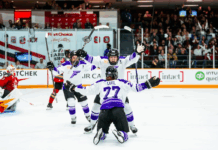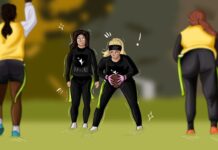With rosters uprooted at the end of every season, university sports teams experience a constant need to rebuild, as talented seniors depart to play professionally or pursue their academic careers.
As a result, the often long and difficult process of recruiting future freshmen has become a mandatory element in the off-season for all sports.
Teams scout players within their own backyard and can expand their search allover the country, often watching highlight tapes, seeing games in person and frequently keeping in contact with players, almost like an interview process.
Carleton Ravens football head coach Steve Sumarah says that every year his coaching staff identifies about 400 athletes at high school games. Eventually him and his staff narrow it down to recruit a mix of the best players.
“If our coaching staff wants to recruit one player, we need to start talking to five players because we likely aren’t the only school recruiting them,” said Sumarah.
“Every year I recruit the best players, but if I need a certain position, I put more focus on that position.”
On top of high school visits, Ravens men’s soccer head coach Kwesi Loney said he will visit local soccer clubs like Ottawa South United, the Nepean Hot-spurs and others to watch their games and skills competitions.
“The clubs play games and train all year and have a public schedule whereas high school seasons are short and game days can change, so it’s easier for me to watch the club teams play,” he said.
While coaches can follow similar recruitment processes and attend some of the same combines or games, no two players go through the same process when being recruited.
Sean Kim, a second-year public affairs and policy management student at Carleton is playing in his first year with the Ravens’ soccer team. His story started by him approaching Loney’s staff with a highlight tape.
“The way it happened was before my freshman year, I emailed the coach my highlight tapes.
“However, I am from Toronto and Coach Loney only had one chance to watch me play, when my competitive club team played in Ottawa.
“I didn’t really play well in that game, so I guess that was my one shot,” said Kim.
After not making the team his first year, Kim attended several open tryouts, scrimmages and skills combines during the summer of 2019.
During a one-on-one meeting with Loney after his second tryout, he was given a chance to practice with the current team.
“I joined the team for training and preseason, but I didn’t have a guaranteed roster [spot] yet. But, I played well during the pre-season, which was super intense, and I made the team,” he said.
“It felt really good to get a spot on the team because it took me over a year to make the team–it was so worth it.”
Simon Chamberlain is a second-year communications and media studies student and was signed to the men’s basketball team in 2018.
He red-shirted during the first year and didn’t play any official games, but still saw it as an important experience.
“It’s a great way to meet the players and coaches, learn from the talented upper-year athletes, hone your skills, learn the plays and practice balancing a busy season with your heavy workload at school,” said Chamberlain.
“One thing I love about the red-shirt program is you do everything the team does except playing the games. So it prepares you very well for your first year of eligibility.”
Chamberlain’s recruitment story started at a young age.While playing in high school, he played in the Nike Elite Youth BasketballLeague when Carleton reached out.
“In Grade 10, I started speaking to Rob Smart, the assistant coach, and he came to visit me and my father in Guelph.”
“We had a meeting, I gave the coach some highlight tapes and from there, the coaching staff scouted me very frequently,” said Chamberlain.
“They visited many of my games untilI decided to commit to Carleton in my senior year of high school. The coaches even started helping me prepare for the transition to Carleton before I committed.”
So far this season, Chamberlain has only played in three games for the Ravens, but is grateful for whatever opportunity he gets on the court.
“I was really honoured to be recruited by Carleton,” he said.“They were the first school to recruit me, which meant a lot to me especially because Carleton has such a great basketball program. That played a large part.”
Looking for players with great character, personality and team chemistry is “just as important” according to Loney.
If a player plays a certain position which the team doesn’t need, but has a great personality and potential to play another position, coaches will help the players make that transition so they can stay on the team.
“The players are equally as responsible for creating locker room chemistry and helping the new athletes adapt to the program,” said Sumarah.
“They have so many players on the football team, everyone has a role.“It’s all about the culture a team creates in the locker room.”
Feature image by Tim Austen.






